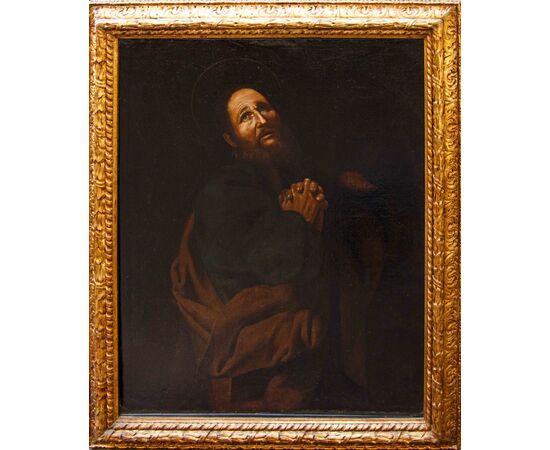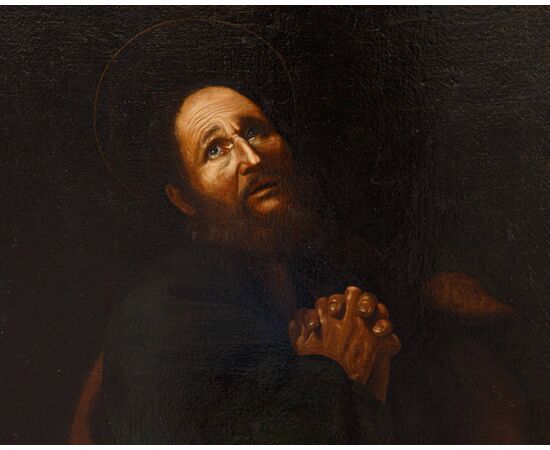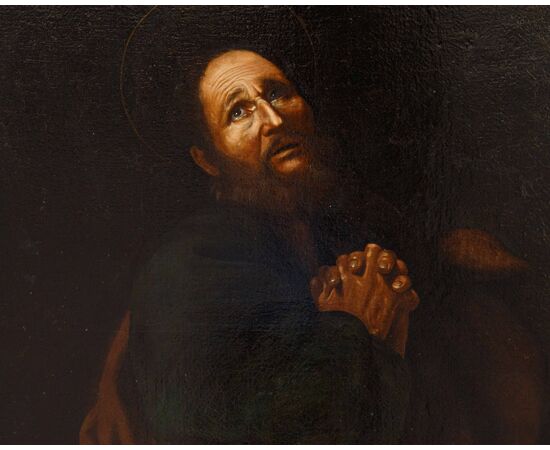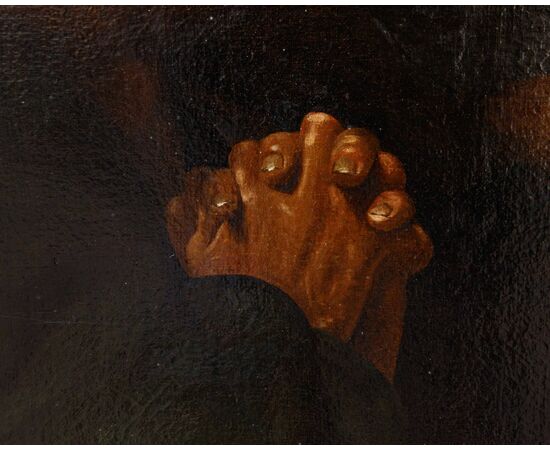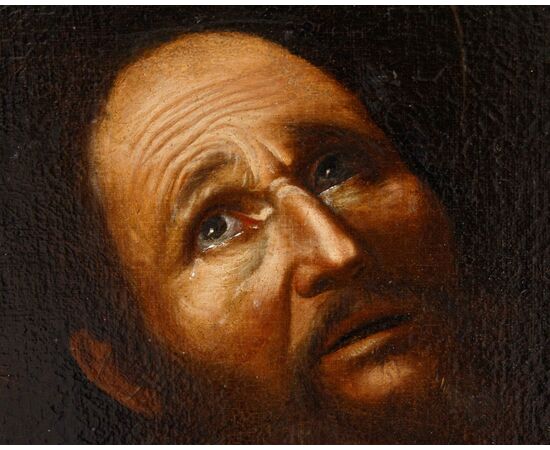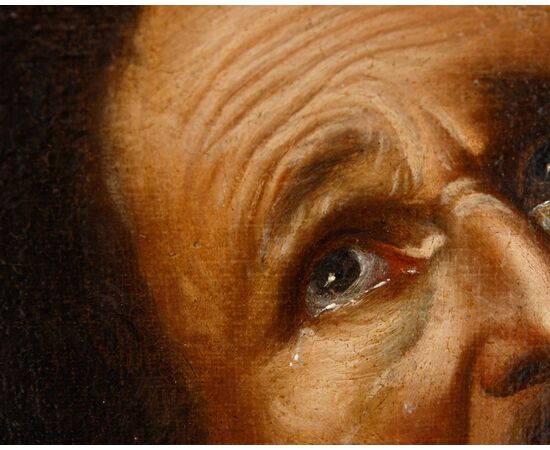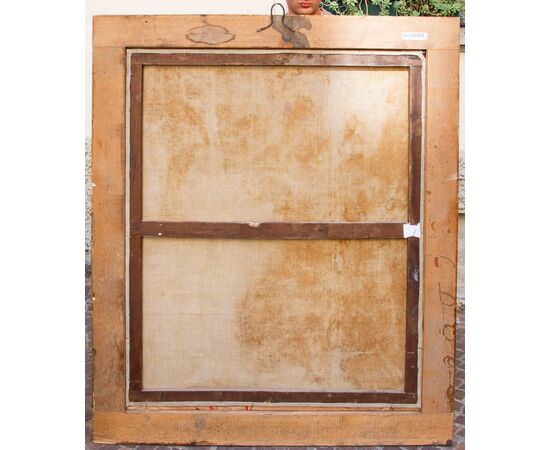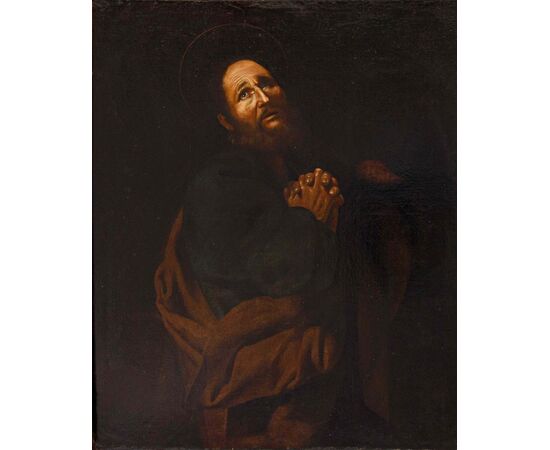Neapolitan school, 17th century, Penitent Saint Peter
Neapolitan school, 17th century
Penitent Saint Peter
Oil on canvas, 120 x 98 cm
With frame, 144 x 122 cm
The work in question, an oil on canvas depicting Penitent Saint Peter, can be attributed, based on stylistic and iconographic characteristics, to the hand of an artist from the Neapolitan School of the 17th century, following in the tradition of Caravaggio and the contribution of all those great masters who inherited it.
In this painting, realism and Caravaggism move together with classicist influences, creating solutions that seem to proceed in parallel. The painter, who demonstrates with this canvas to have fully learned the lesson of Caravaggio, being strongly influenced by artists who acquired his artistic innovations such as Jusepe de Ribera known as lo Spagnoletto, Francesco and Cesare Fracanzano, or even Giuseppe Marullo, expresses in this subject, recurrent in the Neapolitan production of the seventeenth century, all his quality and the very strong emotional charge inherent in his work. The repentance of Saint Peter, a moment of great emotional impact and deep religious significance, takes place shortly after the arrest of Christ, as told by the Synoptic Gospels. Jesus, shortly before, predicted the scattering of his apostles and answered Peter, who rose up at these words, that that very night he would deny him three times before the rooster crows. After the arrest of the Master, Peter was recognized as a disciple but denied three times, before hearing the crowing of a rooster and then repenting and weeping bitterly.
The artist here decides to capture the protagonist in a moment of great emotion and regret, with eyes full of tears from which the sense of guilt suffered for the betrayal just consummated shines through. The saint's hands clench in remorse, while his gaze conveys contrition and at the same time sweetness and gratitude, like the eyes of someone who, despite the wrong committed, has felt forgiven.
The encounter with Ribera is highlighted above all in the iconographic choice of representing Saint Peter in half-length, slightly three-quarter view, with a blue tunic and orange cloak characterized by ample drapery and strong chiaroscuro contrasts. The expression of pain on the face, violently invested by a warm light (in contrast to the darkness that looms over the rest of the body), is underlined by the intensity of the gaze, as well as by the deep wrinkles that furrow the forehead. The chromatic fabric, created through broad and rapid brushstrokes, creates a portrait that is anything but idealized, of such concrete power as to make the pictorial material itself vibrate.
The high pictorial quality is fully manifested in some details, such as the gnarled joined hands, of rare beauty, where great attention has been paid to the rendering of the nails and protruding veins, in the beard made with commendable skill and in the profound naturalistic care reserved for physiognomic details.

